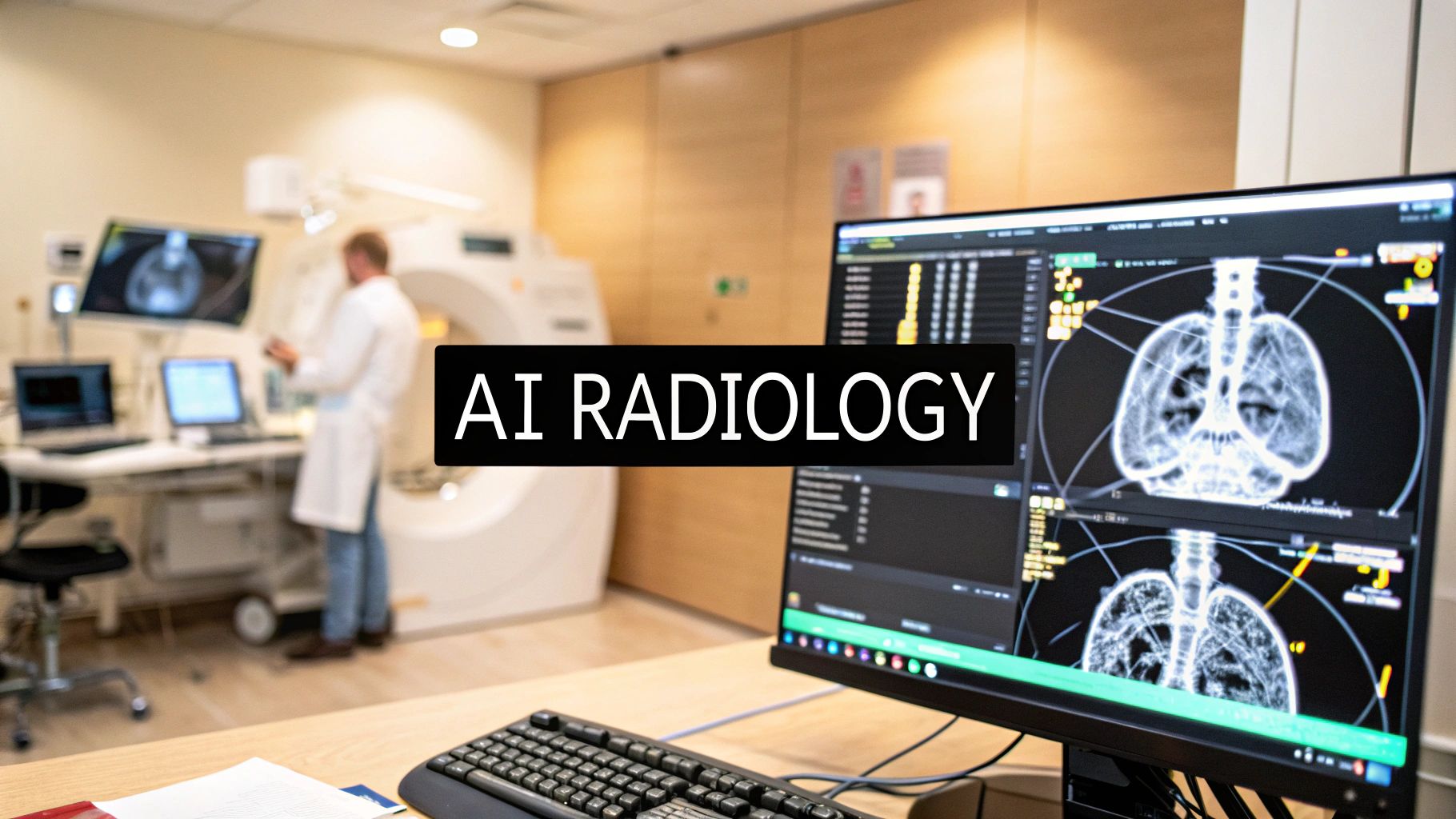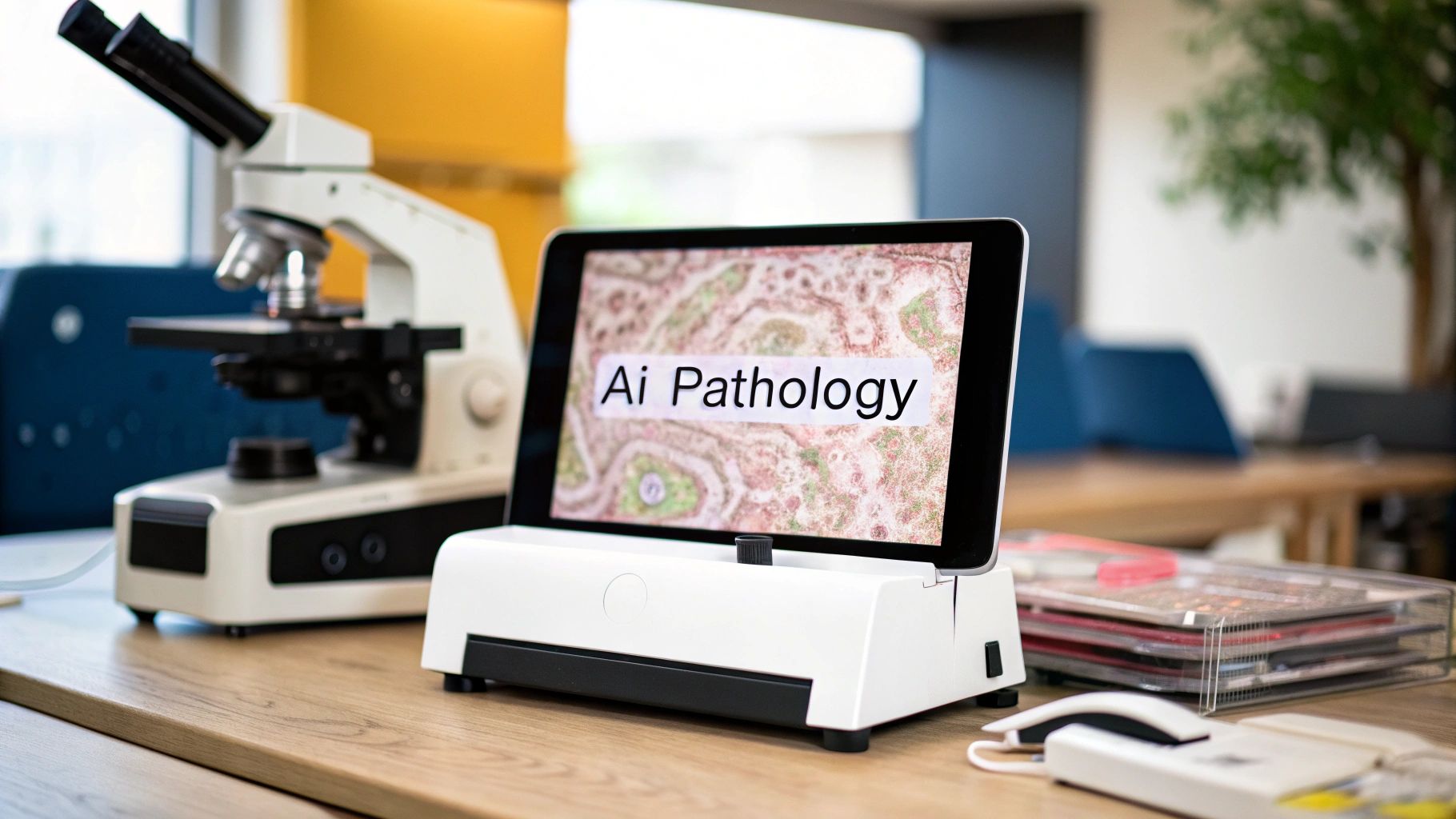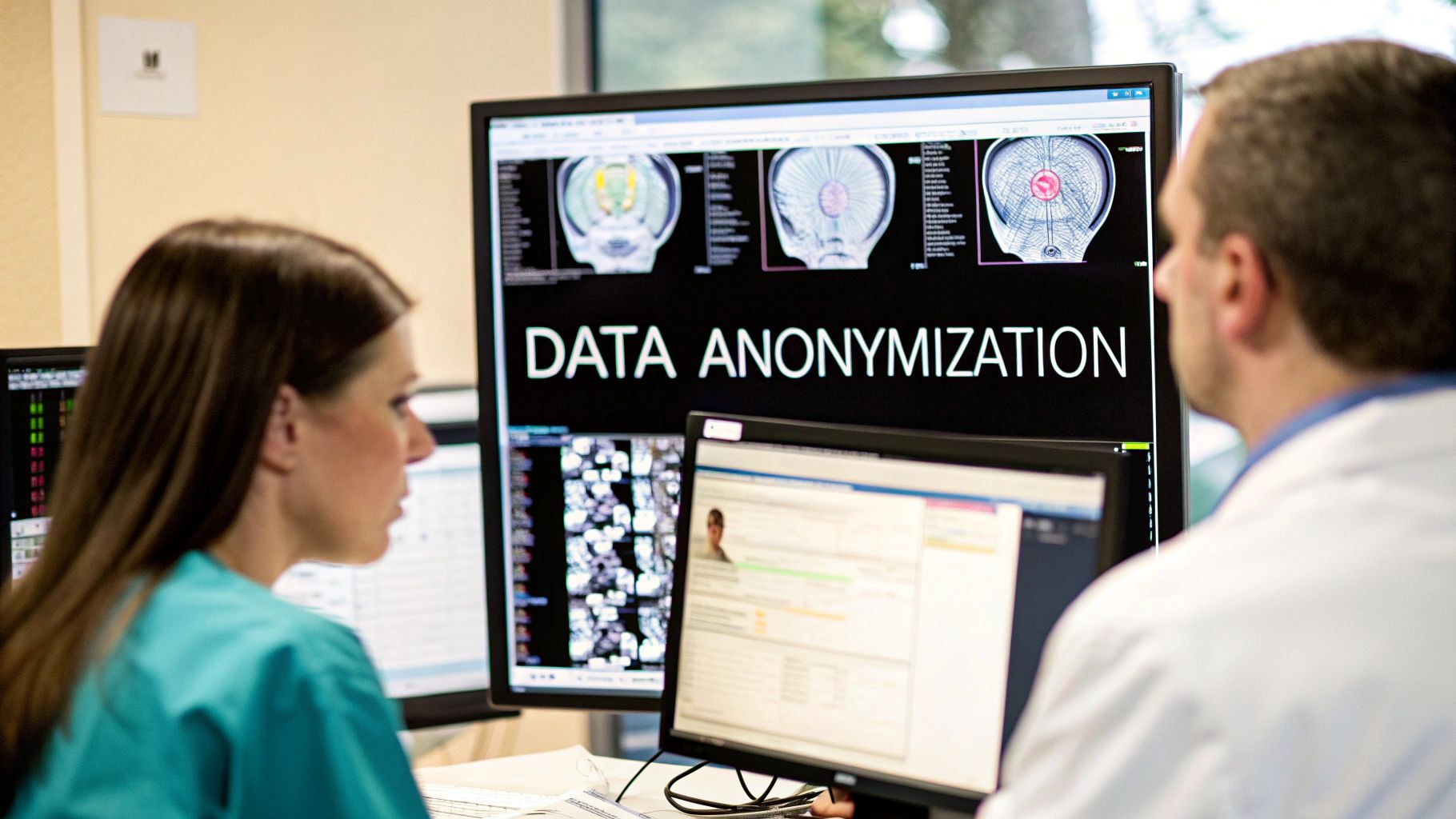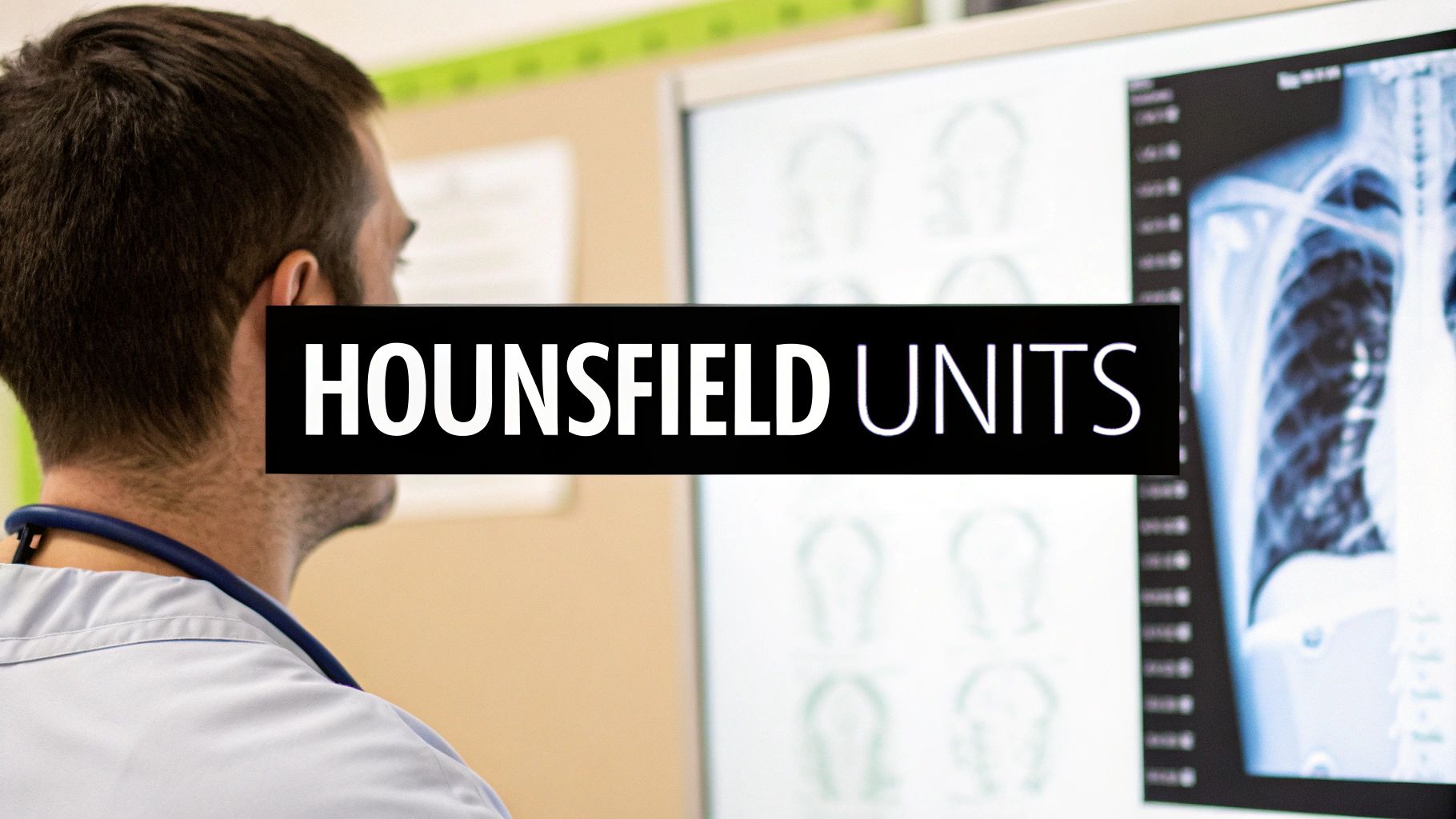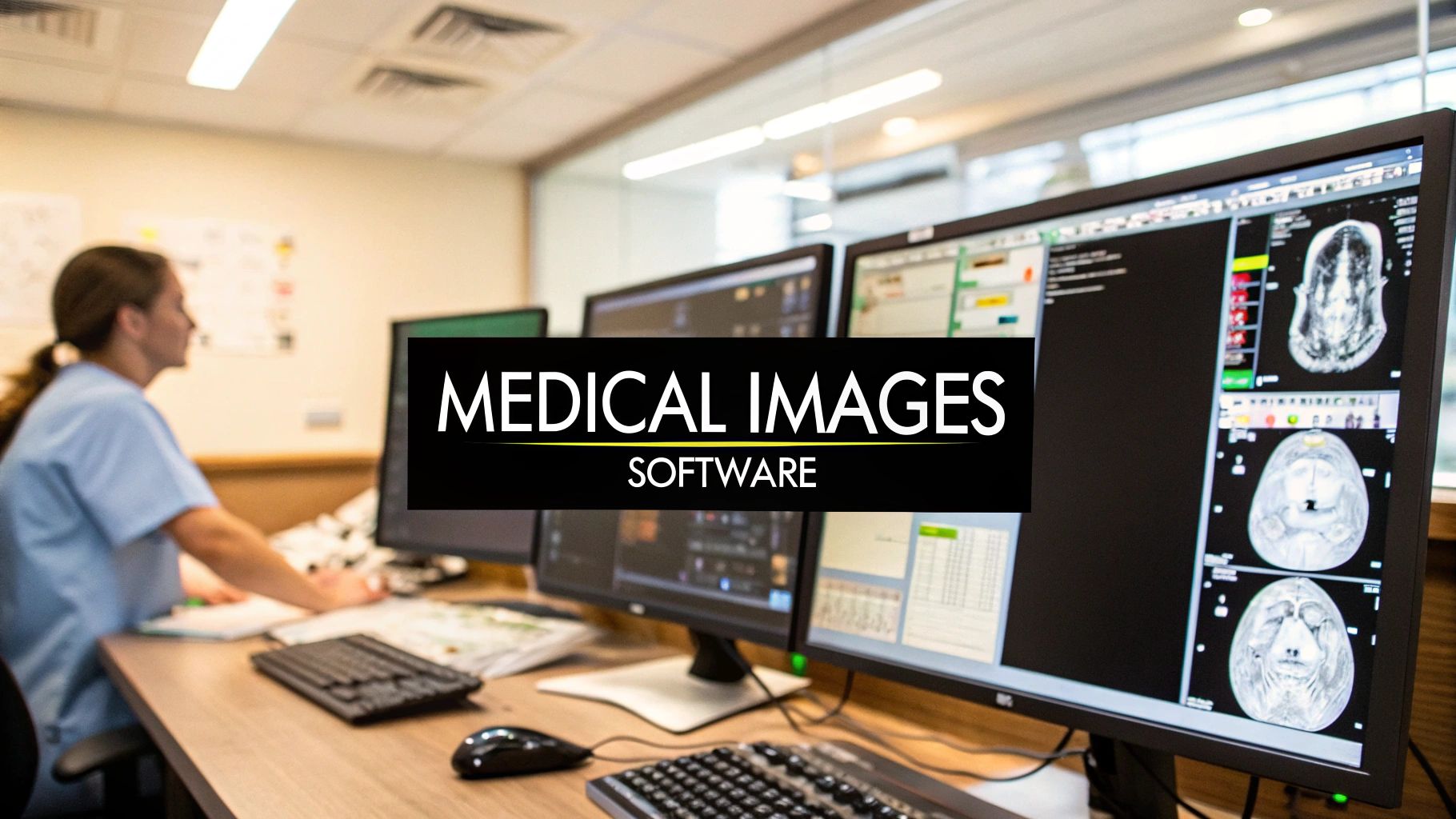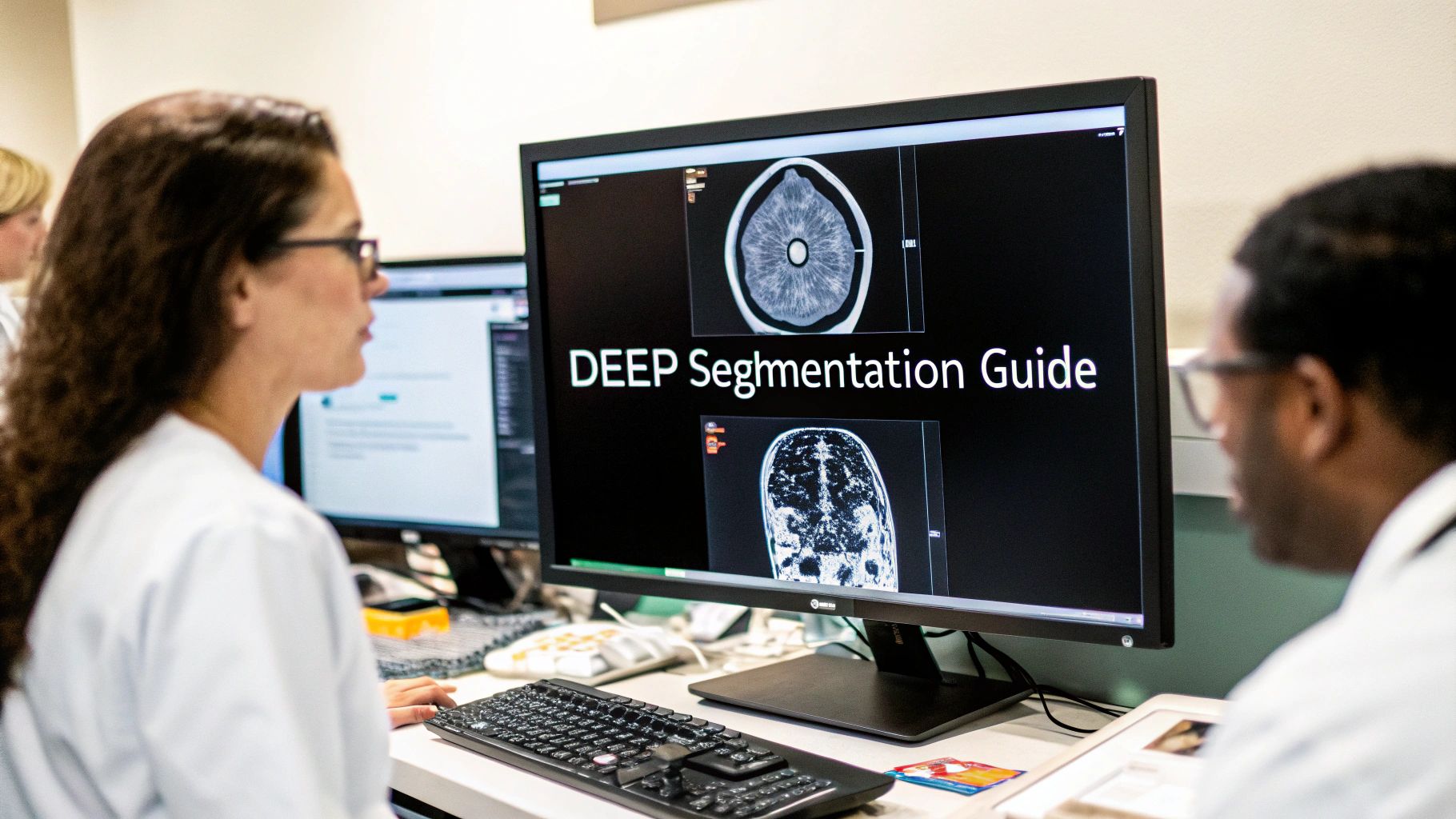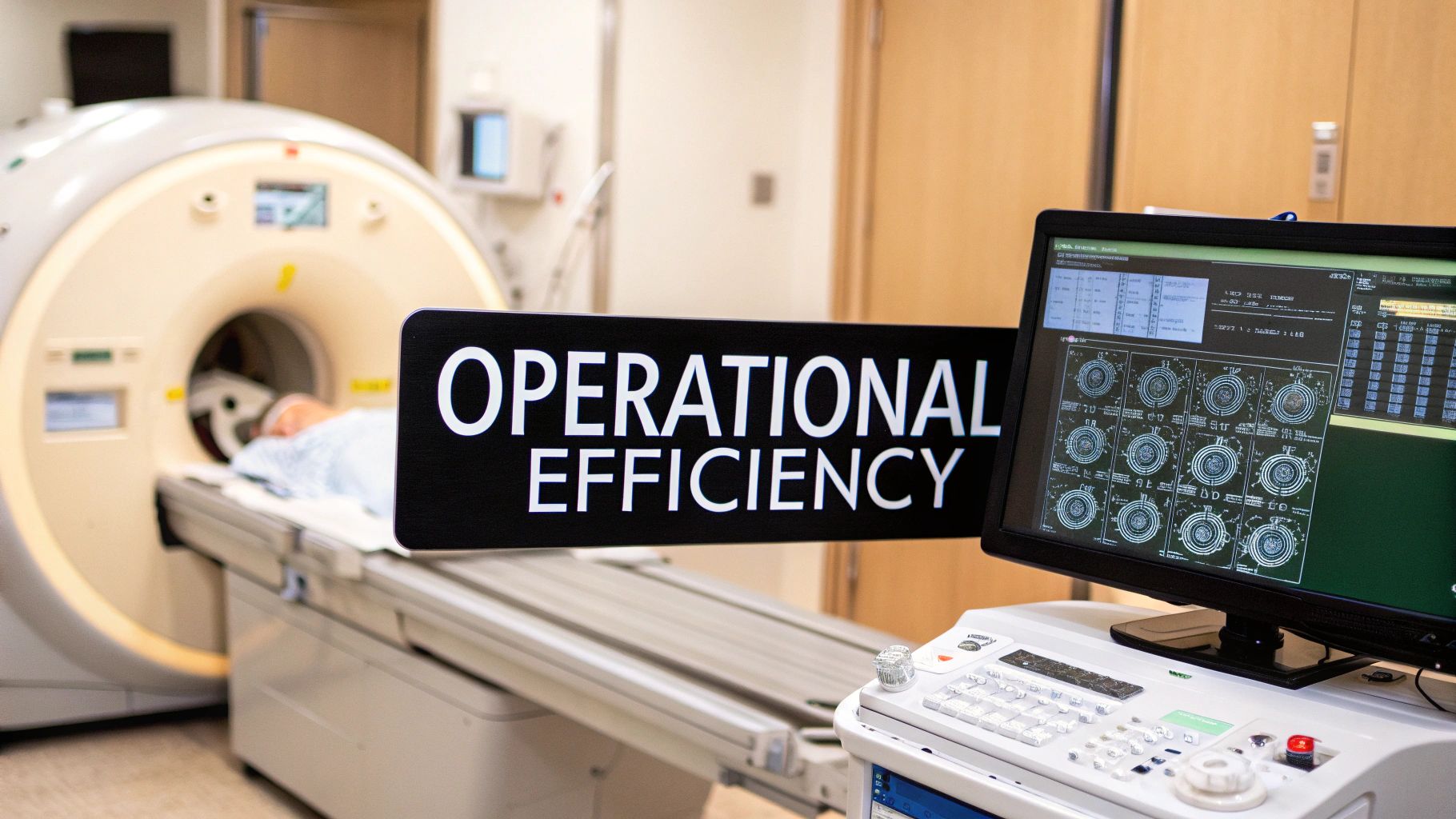The Rapid Rise of Machine Learning in Radiology
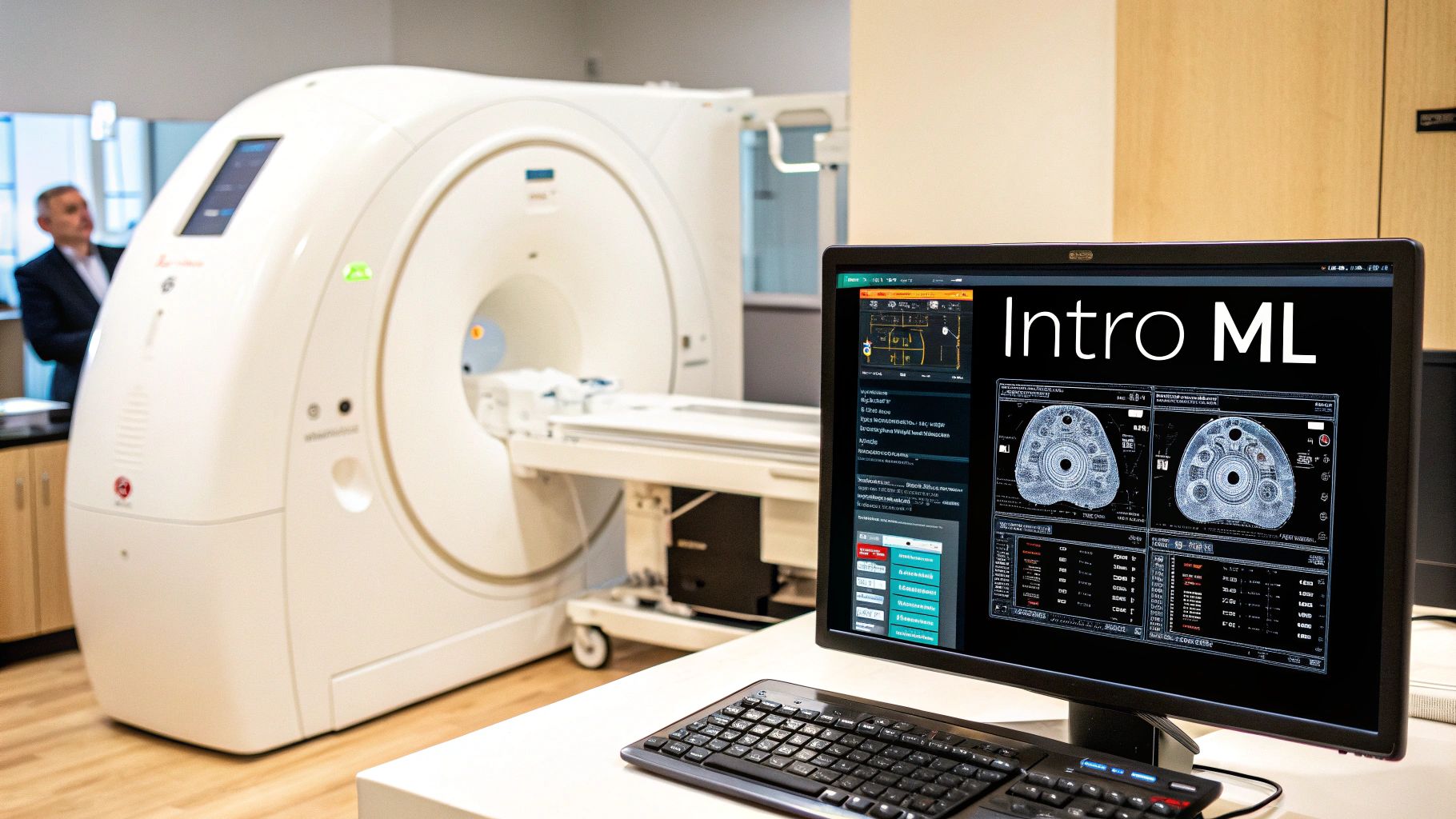
The field of radiology is experiencing a significant shift. The integration of machine learning is rapidly changing how medical professionals diagnose and treat patients. This once specialized research area is now becoming a core component of daily clinical practice. Several converging factors are driving this change, including the growing availability of large medical image datasets, continued advancements in deep learning algorithms, and substantial increases in computing power.
These advancements have led to the development of increasingly sophisticated tools. These tools can analyze medical images with remarkable speed and accuracy, leading to faster diagnoses and personalized treatment plans. This ultimately translates to better and more timely care for patients.
Key Drivers of Growth
Several key factors contribute to the accelerated adoption of machine learning in radiology. The abundance of digital imaging data, from standard X-rays to complex MRIs, provides the raw material for training these powerful algorithms.
Breakthroughs in deep learning, a subset of machine learning, allow these algorithms to detect subtle patterns in images. These patterns might be easily missed by the human eye. This improved pattern recognition is essential for early disease detection and accurate diagnoses.
For example, deep learning models can be trained to identify the early signs of cancer in mammograms or detect minute fractures in bone scans. The increasing availability of powerful computing resources also allows for more efficient processing of this vast amount of data. This leads to faster training times and more precise predictions from the models.
This growth is evident in the significant increase in related research publications. The integration of machine learning in radiology has seen an impressive rise in dedicated research. The estimated continuous growth rate of AI and machine learning publications in Radiology, Nuclear Medicine, and Medical Imaging (RNMMI) is 26.1%. This translates to a doubling time of approximately 2.7 years between 2000 and 2021. This rapid expansion highlights the growing recognition of the potential of AI in improving diagnostic capabilities and streamlining workflow efficiency. Explore this topic further
Global Impact and Collaboration
The impact of machine learning in radiology is global. The USA and China are leading the way in research and development, contributing 44.6% and 23.1% of publications, respectively. This demonstrates a significant international commitment to advancing the field and improving patient care worldwide.
To better understand the global distribution of research efforts, let's look at the following table:
The table below presents a comparison of the top countries contributing to machine learning research in radiology. It highlights their respective contributions to the field, focusing on publication percentages and key research areas.
| Country | Percentage of Publications | Key Research Focus Areas | Notable Institutions |
|---|---|---|---|
| USA | 44.6% | Deep learning, image segmentation, computer-aided diagnosis | Mayo Clinic, Stanford University |
| China | 23.1% | Big data analytics, medical imaging informatics, AI-assisted diagnosis | Peking University, Tsinghua University |
| UK | 7.8% | Cancer detection, neuroimaging, medical image analysis | University of Oxford, University of Cambridge |
| Germany | 5.2% | Medical robotics, image-guided therapy, AI in surgery | German Cancer Research Center, Technical University of Munich |
| Canada | 4.1% | Precision medicine, medical image processing, AI in healthcare | University of Toronto, McGill University |
This table summarizes the leading countries in machine learning radiology research, showing their contribution to the overall number of publications and highlighting some of their key research areas. The USA’s dominance is clear, followed by a strong contribution from China.
This global collaboration fosters innovation and the sharing of best practices for implementing these technologies in various healthcare settings. The focus on deep learning algorithms, particularly well-suited for complex image recognition tasks, promises to further enhance diagnostic accuracy and lead to earlier disease detection. These advancements are essential for improving patient outcomes and reducing healthcare costs in the long term. This trend is likely to continue, with more countries investing in this rapidly expanding field. As machine learning continues its rapid rise in radiology, it has the potential to revolutionize medical imaging and reshape the future of healthcare.
How AI Transforms Diagnostic Capabilities in Real Practice
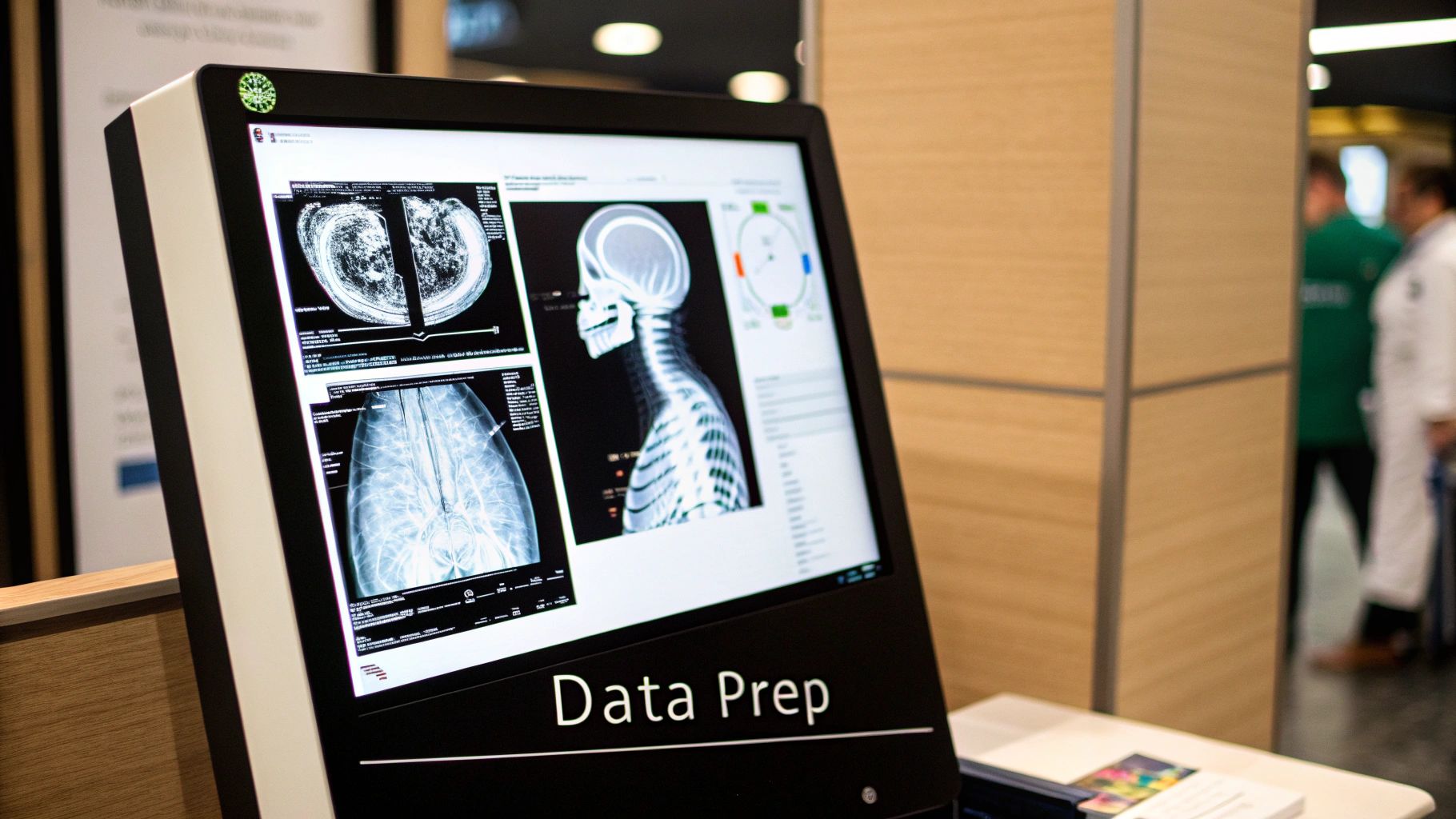
Machine learning is rapidly changing the landscape of radiology. It's no longer a futuristic concept; it's actively reshaping how diagnoses are made. This shift translates to tangible improvements in patient care across various imaging modalities, including X-rays, CT scans, MRIs, and mammograms. These intelligent systems are enhancing the diagnostic process in several key ways.
Enhancing Diagnostic Accuracy
One of the most significant benefits of machine learning in radiology is its ability to detect subtle abnormalities that might be overlooked by the human eye. This is particularly important in complex cases where early detection is critical for successful patient outcomes. Think of an AI system as a second reader, meticulously analyzing images for even the smallest anomalies.
This added layer of scrutiny empowers radiologists to make more informed decisions. It also helps identify potentially critical findings at an earlier, more treatable stage. For instance, AI algorithms have demonstrated impressive accuracy in detecting early signs of lung cancer on CT scans, sometimes even before they're visible to experienced radiologists.
AI also brings a new level of precision to quantifying disease progression. This allows for more accurate monitoring of treatment effectiveness and, ultimately, more personalized patient care. Using AI for literature review is also becoming vital for radiologists staying current with advancements in the field.
Improving Workflow Efficiency
Machine learning algorithms are increasingly used to automate image analysis and improve workflow efficiency in radiology. These algorithms can interpret medical images, such as X-rays, CT scans, MRIs, and mammograms, with remarkable accuracy, often detecting subtle issues that might be missed by human radiologists. This capability not only enhances diagnostic performance but also provides comprehensive support for decision-making.
For example, AI tools can streamline radiology workflows by automating time-consuming tasks like image segmentation and organ delineation. This reduces the workload on radiologists, freeing them to concentrate on more complex cases requiring their expertise. You can find out more about machine learning’s impact on radiology.
Looking ahead, the use of machine learning in radiological imaging is projected to grow significantly over the next five to ten years. This growth is fueled by advancements in computing power and increasingly sophisticated algorithms. This continued development is essential for improving diagnostic accuracy, controlling healthcare costs, and enhancing patient care worldwide.
Prioritizing Critical Findings and Enhancing Confidence
Machine learning also plays a crucial role in helping radiologists prioritize critical findings. AI algorithms can quickly analyze large volumes of images, flagging those requiring immediate attention. This capability is especially valuable in busy emergency departments where speed and accuracy are paramount. This rapid triage can expedite treatment for patients with urgent conditions, potentially saving lives.
Furthermore, AI provides a valuable tool for enhancing diagnostic confidence. By offering objective, data-driven insights, machine learning algorithms can reinforce a radiologist's assessment. This can be particularly helpful in cases with ambiguous or subtle findings. This added confidence leads to better patient care by supporting more decisive and effective treatment strategies. AI in radiology is not simply about automation; it’s about augmenting human capabilities, empowering radiologists to make better decisions and deliver more informed, confident diagnoses. This evolution in radiology points towards a future where AI and human expertise seamlessly integrate to optimize patient care.
Transforming Radiology Workflows Beyond Diagnosis
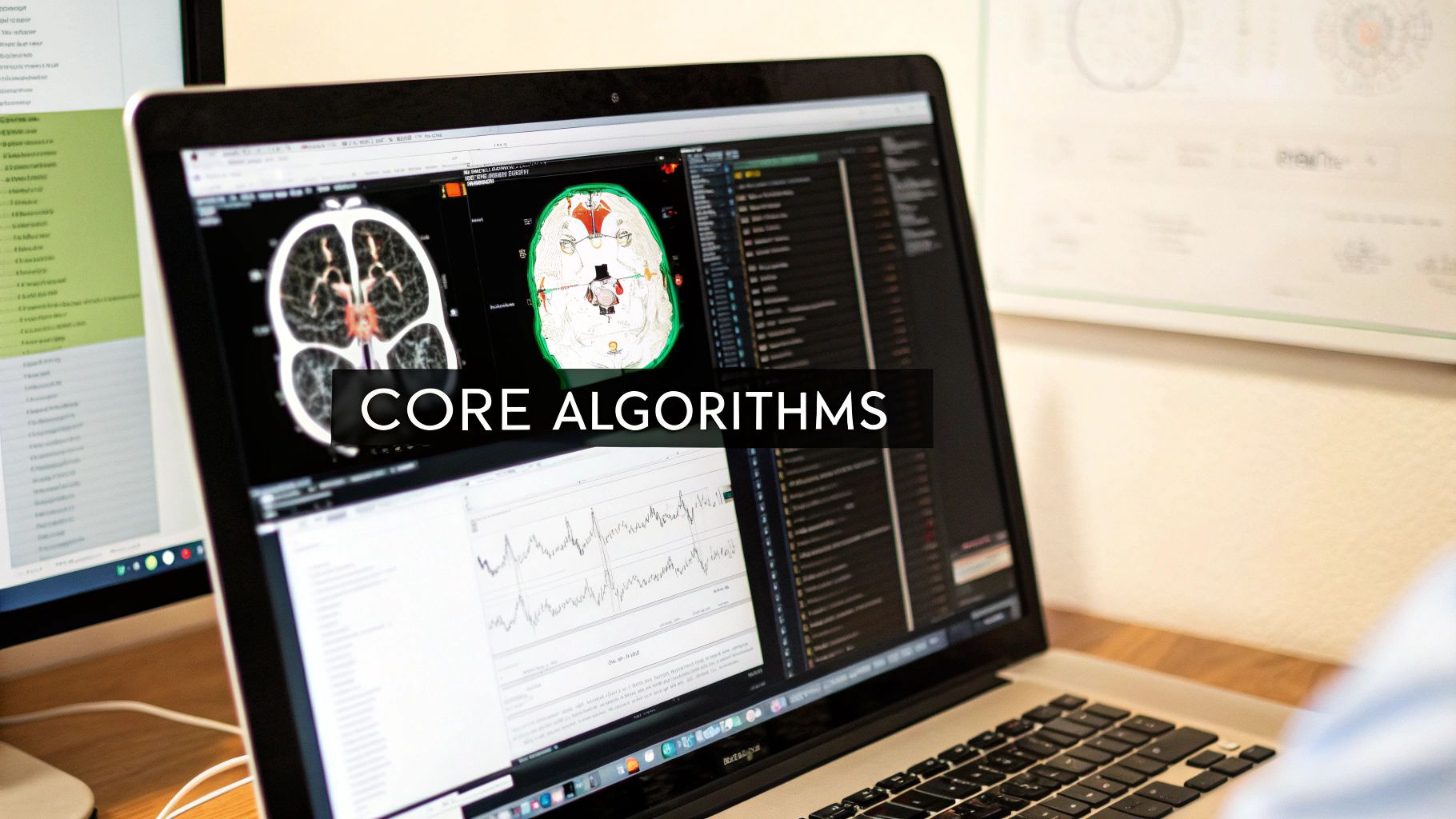
Machine learning is reshaping radiology, moving beyond simply improving diagnostic accuracy to revolutionizing departmental operations. This technology offers the potential to redesign workflows, boost efficiency, and ultimately lead to better patient care. Leading institutions are already experiencing these changes.
Intelligent Triage and Prioritization
One crucial area where machine learning is making a difference is intelligent triage. Imagine a system that analyzes incoming cases and automatically prioritizes time-sensitive ones, like suspected strokes or internal bleeding. This technology is now a reality. Machine learning powered triage systems are helping radiologists concentrate on the most critical cases first, saving precious time in life-or-death situations.
This not only leads to improved patient outcomes but also optimizes resource allocation. By efficiently directing resources to where they are most needed, hospitals can improve overall efficiency and potentially reduce wait times for critical imaging exams. This application is especially valuable in busy emergency departments.
Reporting Assistants and Documentation Efficiency
Another area primed for improvement is reporting. Radiologists often dedicate a significant amount of time to documentation, a task that can take them away from analyzing images and patient interaction. Machine learning-powered reporting assistants are changing this. These tools can automatically generate preliminary reports, including important findings and measurements, which allows radiologists to focus on more complex interpretations and consultations.
This not only decreases documentation time but also increases the number of cases radiologists can handle without sacrificing quality. This workflow improvement can greatly increase a radiology department's productivity. By lessening the administrative burden, these assistants allow radiologists to spend more time on their core skill: image interpretation.
Seamless PACS Integration and Adoption
Successfully implementing machine learning depends on smooth integration with existing systems. Picture Archiving and Communication Systems (PACS) form the backbone of radiology departments. Therefore, seamless integration of machine learning tools with PACS is essential for smooth adoption. Leading institutions are accomplishing this by integrating AI directly into the PACS workflow.
This removes the need for radiologists to switch between systems, creating a more user-friendly experience and promoting wider adoption. This integrated approach minimizes workflow disruptions and improves efficiency, maximizing the benefits of machine learning. By becoming part of the standard workflow, these tools are more readily adopted by radiologists and become a natural part of the diagnostic process.
Measuring the Impact: Before and After Metrics
The advantages of machine learning in radiology workflows are tangible and measurable. Many institutions are observing significant improvements in key performance indicators. The following table provides a comparison of workflow metrics before and after implementing machine learning.
Workflow Efficiency Improvements with Machine Learning: Statistical data showing workflow metrics before and after machine learning implementation
| Workflow Metric | Traditional Workflow | ML-Enhanced Workflow | Percentage Improvement |
|---|---|---|---|
| Turnaround Time | 24 hours | 12 hours | 50% |
| Radiologist Productivity (Cases/day) | 40 | 60 | 50% |
| Error Rate | 5% | 2% | 60% |
These figures, while hypothetical, illustrate the potential of machine learning to positively impact radiology workflows. These advancements optimize every step, from exam ordering and protocol selection to follow-up. By streamlining these processes, machine learning allows radiologists to focus their expertise on providing accurate and timely diagnoses, ultimately improving patient care. This fundamental shift in radiology workflows is a key element in the advancement of modern medical imaging.
Practical Implementation Roadmap for Clinical Success
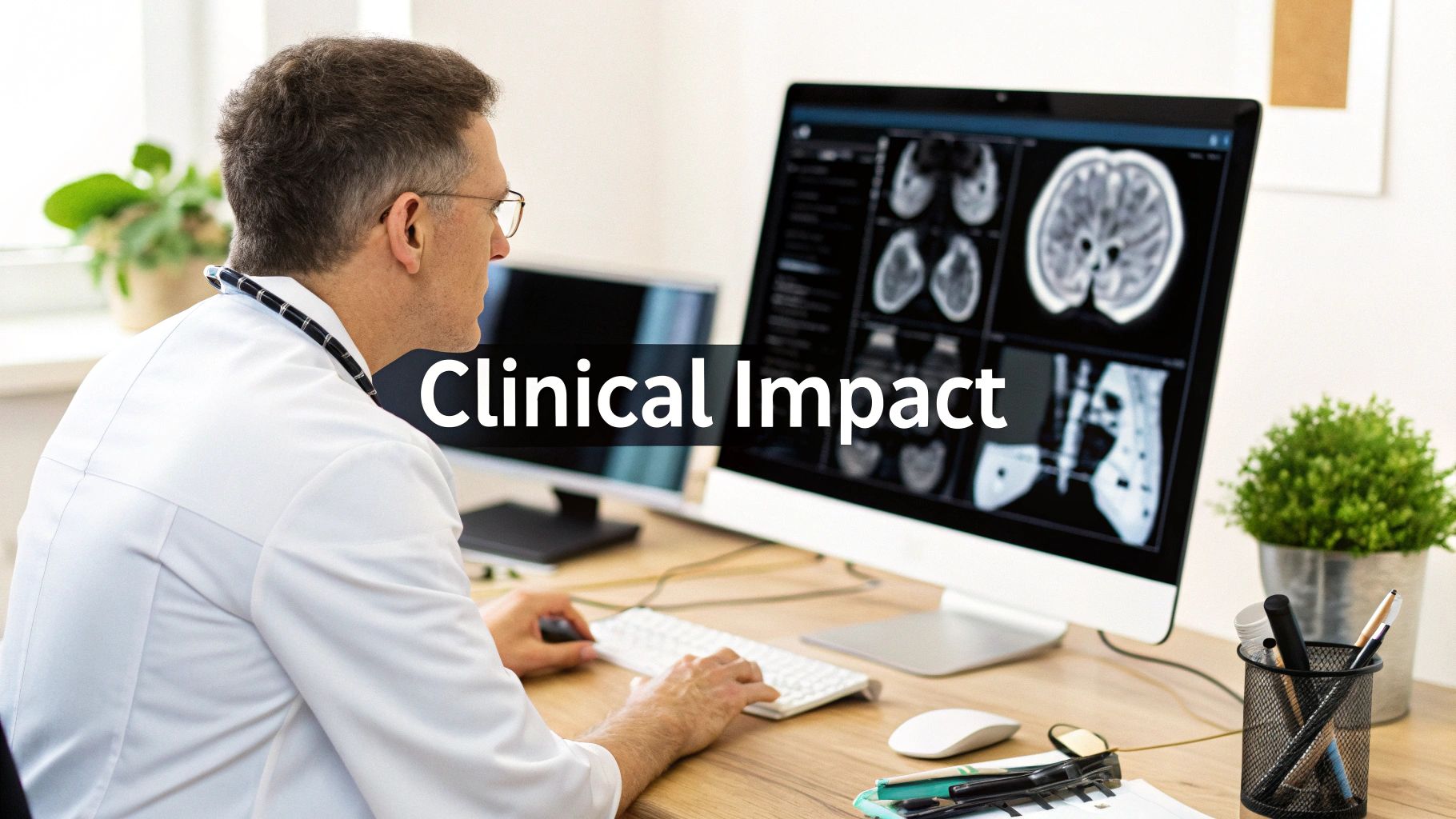
Successfully integrating machine learning into radiology requires a well-defined strategy. Transitioning from theoretical potential to practical clinical application involves careful planning and execution. This section offers a roadmap based on valuable insights from radiology directors who have effectively implemented these technologies.
Essential Infrastructure and Data Governance
A strong foundation is essential for success. Before implementing machine learning, thoroughly assess your current infrastructure. Ensure sufficient computing power, storage capacity, and network bandwidth to handle the demands of large image datasets.
Establishing a robust data governance framework is also paramount. This framework should encompass data security, patient privacy, and access control. It also needs to define clear protocols for data acquisition, annotation, and quality control.
This ensures the data used to train and validate your machine learning models is reliable and meets all necessary regulatory requirements. A well-defined governance framework also simplifies compliance and builds trust with patients and healthcare providers. This foundation is the bedrock for successful machine learning algorithm deployment.
Selecting High-Impact Use Cases and Securing Buy-In
Focusing on specific, measurable goals is key for demonstrating the value of machine learning. Start by identifying high-impact use cases that align with your clinical needs and broader strategic objectives.
For instance, if your hospital handles a large volume of chest X-rays, an AI-powered solution for automated lung nodule detection could significantly improve both efficiency and diagnostic accuracy.
Gaining physician buy-in is equally vital. Involve radiologists early in the selection process to ensure the chosen solutions address their needs and alleviate any concerns.
This collaborative approach cultivates trust and promotes a sense of ownership among the clinicians using these tools. Physician support is crucial for seamless adoption and truly effective implementation.
Regarding implementation strategies, in-house data acquisition is highly recommended for integrating machine learning algorithms into clinical practice. This approach ensures that the AI models are trained on datasets specific to each facility, improving real-world performance. High-quality data is fundamental to successful AI deployment. The growing use of AI and 3D imaging in radiology highlights the potential of these technologies to improve diagnostic accuracy and lower healthcare costs. This ultimately makes radiological services more accessible and more effective for everyone. By effectively leveraging machine learning and AI, healthcare providers can enhance patient outcomes and streamline medical imaging processes on a global scale. Discover more insights about this research.
Training, Validation, and Maintaining Performance
After selecting and implementing machine learning tools, comprehensive training programs for radiologists are essential. These programs should cover the specifics of how the algorithms function, their limitations, and how to interpret results. Effective training empowers radiologists to confidently use these tools in their everyday practice.
Establish robust validation protocols to ensure patient safety and maintain the accuracy of your AI models. Continuously monitor the performance of the algorithms and retrain them periodically as needed. Clinical practices and patient populations are always evolving, so your models must adapt.
This continuous validation and maintenance are key to ensuring the long-term effectiveness and reliability of your machine learning tools. Consistent performance monitoring and model adjustments facilitate continual improvement and the enduring success of your machine learning implementation within radiology. By following this roadmap, radiology departments can harness the power of machine learning to improve patient care and shape the future of medical imaging.
Radiologists 2.0: Thriving in the Age of AI
Forget the idea that radiologists are becoming obsolete. The truth is, radiologists who embrace AI are becoming even more vital to modern healthcare. This partnership between human expertise and artificial intelligence is creating exciting new roles and career paths. Let's explore how radiologists are adapting and flourishing in this evolving medical landscape.
Developing AI Literacy and Expanding Consultative Impact
A crucial part of this shift involves radiologists developing AI literacy. This doesn't require becoming a programmer, but rather understanding how machine learning can enhance radiological practice. It means grasping the capabilities and limitations of AI, and comfortably interpreting AI-generated insights.
This understanding allows radiologists to expand their consultative roles. They become indispensable advisors, interpreting AI data within the context of patient history and other diagnostics. Radiologists with AI literacy bridge the gap between complex algorithms and practical patient care.
Fostering Interdisciplinary Collaboration and Imaging Informatics
AI is encouraging greater collaboration between radiologists and other medical specialists. By sharing their expertise in image interpretation and AI analysis, radiologists become essential members of multidisciplinary teams. This approach contributes to more comprehensive patient care by integrating imaging data into overall treatment plans.
This increased collaboration is also fueling the growth of imaging informatics as a specialized career path. This field focuses on using information technology and AI to optimize image management and interpretation. It offers exciting opportunities for radiologists at the intersection of technology and medicine.
The Changing Educational Landscape and Leadership Opportunities
Medical education is adapting to this new era. Radiology residency programs are incorporating AI training into their curricula. This equips future radiologists with the essential skills to use AI tools effectively from the beginning of their careers. This ensures the next generation of radiologists is prepared for the changing realities of the profession.
Furthermore, the integration of machine learning in radiology creates opportunities for leadership. Radiologists are becoming key figures in developing, implementing, and evaluating AI strategies within healthcare systems. They guide the ethical and effective integration of AI, guaranteeing these technologies are used responsibly to improve patient care.
Perspectives From the Field: Navigating the Transition
Radiologists at all career stages are finding ways to leverage AI. Experienced radiologists are using these tools to improve efficiency and diagnostic accuracy. Meanwhile, those earlier in their careers are embracing opportunities to specialize in imaging informatics and other emerging fields.
By proactively integrating AI into their practices, radiologists are positioning themselves for success. Rather than viewing AI as a threat, they see it as a powerful tool that enhances their expertise and increases their value within the healthcare system. This positive perspective paves the way for a collaborative future where radiologists and AI work together to achieve better patient outcomes.
Navigating Ethical Challenges in AI-Powered Radiology
As machine learning becomes increasingly integrated into radiology, a new wave of ethical considerations emerges, demanding careful attention. Open discussions with stakeholders, including ethicists, regulators, and radiologists themselves, are essential to navigate these complex issues.
Ensuring Algorithm Transparency and Mitigating Bias
One primary concern revolves around the "black box" nature of some AI algorithms. Algorithm transparency, the ability to understand how an algorithm reaches its conclusions, is paramount for building trust and ensuring responsible use. This transparency is particularly crucial in healthcare where decisions can significantly impact patient well-being.
Another critical ethical consideration is dataset bias. AI algorithms learn from the data they're trained on. If this data reflects existing societal biases, the algorithm may perpetuate or even amplify these biases in its predictions. For example, if an algorithm is trained predominantly on images from one demographic group, it may be less accurate for patients from other backgrounds. Addressing this requires careful curation of diverse and representative datasets.
Protecting Patient Privacy and Obtaining Informed Consent
Patient privacy is paramount in healthcare. Using machine learning in radiology involves processing large quantities of sensitive patient data. This necessitates robust security mechanisms to protect patient confidentiality.
Patients must also be fully informed about how their data is used and the potential implications of AI involvement in their care. Meaningful informed consent is essential for preserving patient autonomy and trust. This involves clear and accessible explanations of AI's role in the diagnostic process.
Navigating Regulatory Pathways and Validation Standards
The regulatory landscape for AI in healthcare is constantly evolving. Understanding FDA approval pathways for AI-powered radiology tools is crucial for developers and healthcare institutions. International regulatory differences further complicate matters. Staying abreast of evolving regulations is vital for successful implementation.
Validation standards are another key area. These standards ensure AI tools undergo rigorous testing and meet specific performance benchmarks before clinical use. This helps guarantee the safety and effectiveness of these technologies.
Addressing Responsibility, Disclosure, and Equitable Access
The increasing use of AI in radiology raises questions about responsibility. Who is accountable if an AI algorithm makes an error? This question requires careful consideration and clearly defined protocols. Determining the appropriate level of disclosure to patients regarding AI's role in their diagnosis is also crucial.
Ensuring equitable access to these advanced technologies is another ethical imperative. The benefits of AI in radiology should be available to all patients, irrespective of their socioeconomic status or location. This requires addressing potential disparities in access and developing solutions that promote fairness.
Managing Data Ownership, Algorithm Drift, and Incidental Findings
Data ownership in the context of AI-powered radiology presents unique challenges. Who owns the data used to train and validate these algorithms? Clear agreements and guidelines are necessary. Algorithm drift, the gradual decline in an algorithm's performance over time, requires continuous monitoring and recalibration.
Finally, AI algorithms sometimes reveal incidental findings—unexpected abnormalities unrelated to the initial scan's purpose. Establishing ethical guidelines for managing these findings is vital for patient well-being and to avoid unnecessary anxiety. By proactively addressing these ethical challenges, we can ensure that machine learning in radiology is used responsibly and effectively to improve patient care.
The Future Frontier: What's Next for ML in Radiology
Machine learning is already reshaping radiology, but the future holds even more exciting potential. By exploring emerging trends and advancements, we can get a glimpse into what lies ahead for this dynamic field.
Multimodal Integration: A Holistic View of Patient Health
Imagine combining the detailed information from medical images with the wealth of data found in a patient's genetic profile, pathology reports, and overall medical history. This is the potential of multimodal integration, a rapidly growing area in machine learning. By bringing together these diverse data sources, AI can develop a more complete and nuanced understanding of a patient's condition. This approach can significantly improve diagnostic accuracy and personalize treatment strategies.
For example, by combining imaging data with genomic information, AI could predict a patient's likelihood of responding to a particular therapy. This targeted approach minimizes adverse effects and optimizes treatment outcomes.
Predictive Analytics: Forecasting Disease and Treatment Response
Predictive analytics takes us beyond diagnosis, allowing us to forecast future health outcomes. Machine learning models are being developed that can predict the progression of diseases like cancer or Alzheimer's disease. This predictive ability empowers healthcare professionals to make proactive decisions, intervening earlier and potentially changing the course of the disease.
Furthermore, these models are being used to anticipate how individual patients will respond to various treatments, paving the way for truly personalized medicine. This personalized strategy results in more effective care tailored to the individual's specific needs.
Quantum Computing and Federated Learning: Expanding AI Capabilities
The intersection of quantum computing and machine learning holds enormous promise. Quantum computers could drastically accelerate the speed and complexity of algorithms, enabling them to analyze massive datasets and identify incredibly subtle details. While still in its early stages, quantum machine learning could revolutionize the analysis of medical images, uncovering information previously impossible to detect.
Federated learning offers a solution to data privacy concerns while encouraging collaboration. This technique allows multiple institutions to collaboratively train a shared AI model without directly exchanging sensitive patient data. Each institution trains the model on its own data and then shares only model updates. This approach accelerates model development and improves its generalizability while safeguarding patient privacy.
Augmented Reality and New Imaging Biomarkers: Transforming Surgical Planning and Beyond
Augmented reality (AR) is poised to revolutionize surgical planning. By overlaying 3D image reconstructions onto a patient's body in real-time, AR gives surgeons an enhanced understanding of the patient's anatomy. This improves surgical precision, minimizes invasiveness, and reduces the risk of complications.
Machine learning also drives the discovery of new imaging biomarkers, measurable characteristics extracted from medical images that provide valuable insights into disease. These biomarkers could reveal new ways to diagnose and monitor diseases, even before they become clinically apparent.
The ongoing development of machine learning applications continues to push the boundaries of what's achievable in radiology. These advancements are building a foundation for a future where medical imaging plays an even more vital role in improving patient outcomes and transforming healthcare.
Are you ready to explore the potential of AI in your medical imaging solutions? PYCAD, a leader in AI integration for medical imaging, offers a comprehensive range of services to help you leverage the power of this technology. From data management and model training to deployment and support, PYCAD collaborates with you to optimize your medical devices, enhance diagnostic accuracy, and improve operational efficiency. Visit PYCAD to learn more and discover how they can help you achieve your objectives.
